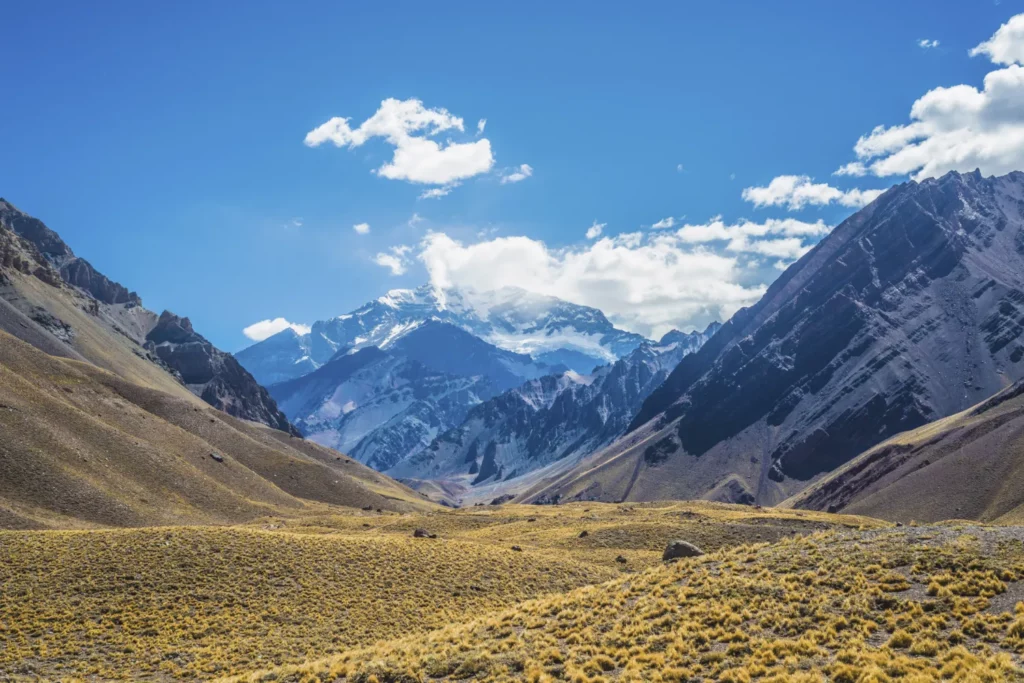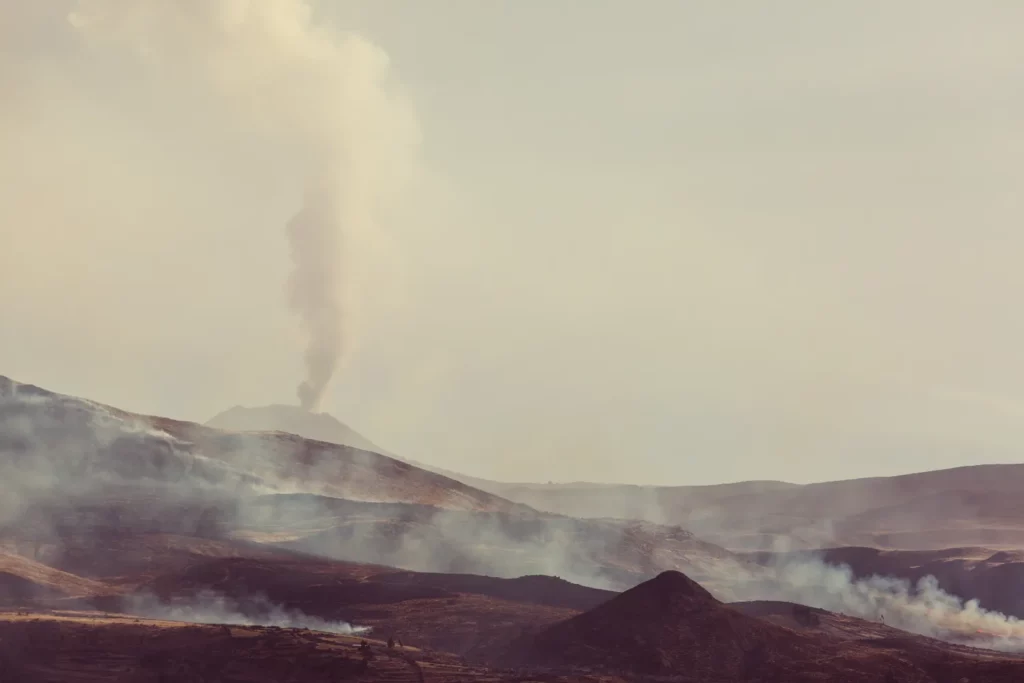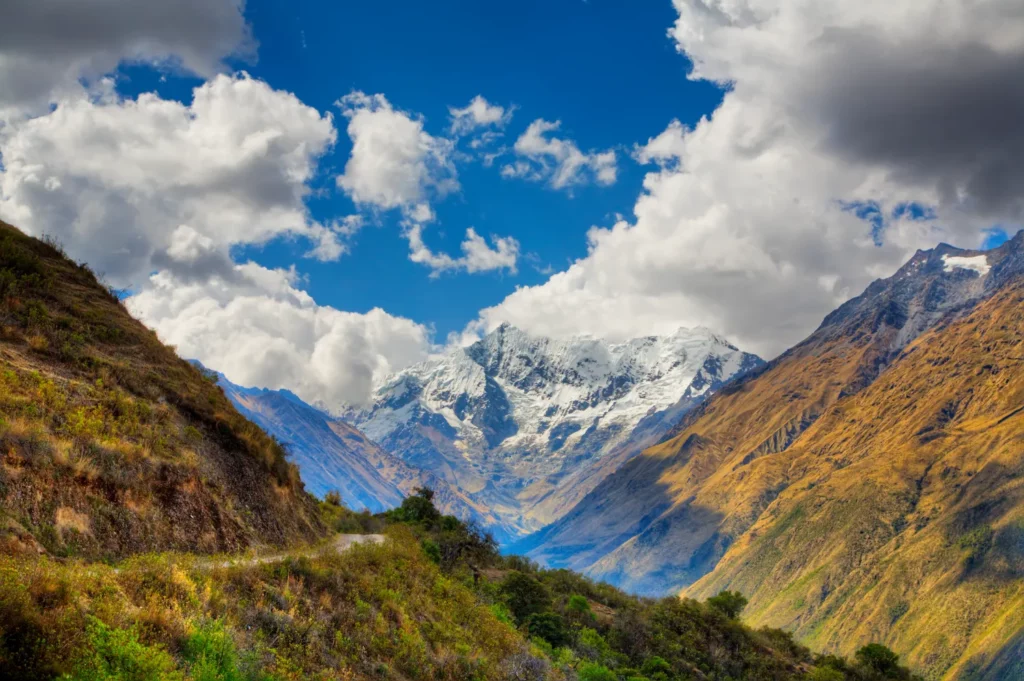The Andes Mountains: 10 Exciting Facts About This South American Wonder

Updated On: November 09, 2023 by Miranne Khaled
If you’re in for a great adventure, then South America should be your next pick. This continent is known for its plentiful natural wonders, promising to offer an experience like no other. Thanks to the magnificent Andes Mountains range, it makes the continent an even more extraordinary edge. Known as the world’s most extended mountain range, it spans an impressive length and towers at remarkable heights.
You can behold the unparalleled beauty of the Andes Mountains from seven different countries, with each peak presenting a hypnotising perspective, overlooking various scenes of stunning vistas perfect for sightseeing. Yet, the Andes Mountains offer more than just pretty sceneries to behold; they also offer spacious landscapes to explore and countless natural wonders to marvel at.
Before you plan on venturing into these splendid heights, there’s so much to learn about the iconic South American landmark. Delve into the history of the Andes Mountains and be ready to be regaled by these 10 enthralling facts curated to intrigue you and leave you spellbound. So, sit tight and prepare to be utterly enthralled.
1. The Andes Mountains Are Over 65 Million Years Old
The Andes Mountains are quite a sight to behold, and their age happens to be as impressive as their raw beauty. Geologists and experts suggest that this superb range has been around more than most of the species living in the modern world. They speculate that the Andes formation dates back 65 million years or even more.
Such a massive formation wouldn’t appear out of the blue, especially with its multiple peaks and exceptional heights. Recent studies claim that the Andes Mountains’ formation resulted from an intense tectonic activity that occurred repeatedly over several years. It’s also speculated that the process took place during the Cenozoic Era, which goes back 65 million years.

2. It Spans Across Seven South American Countries
The Andes Mountains are one of South America’s most spectacular natural attractions. It’s always been famed for its mighty size and unprecedented beauty. Not only does it span across one country but seven countries. Each section of the Andes boasts some unique glamour, attracting adventure enthusiasts from every corner of the world.
The Andes is divided into three sections: the Southern region spanning Chile and Argentina, the northern part in Ecuador, Venezuela, and Colombia, and the central part stretching in Bolivia, Chile, and Peru. Its immense size makes it visible from all those countries, adding allure to your trip around South America.
3. The Andes Mountains Are Volcanic
As you take a deep look at the grandeur of the Andes, you may not guess that its peaks are more than just pretty sights but they conceal a long past of volcanic activity. The Andes happen to fall within the Ring of Fire — a region within the Pacific Ocean that’s a hotbed for volcanic activity and intense earthquakes thanks to the constant collision of tectonic plates.
The whole range of the Andes Mountains falls squarely within the Ring of Fire, known as the Andean Volcanic Belt, featuring over 200 cones. The central part falls near the borders of Chile and Argentina, the most active, with the Ojos del Salado being the world’s most active volcano, yet Lascar claimed the last eruption that took place in December 2022.

4. The World’s Best Spot for Outdoor Activities
Well, the Andes is a captivating attraction for all travellers of South America, yet it remains the most prominent playground of fitness enthusiasts. This region is deemed a rewarding destination for adventure lovers, offering myriad outdoor activities to make your journey more exciting and unforgettable.
Climbing and hiking may be the most famous activities around the Andes Mountains, but there are even more. The Andes offer white water rafting, stargazing, horse riding, skiing, cycling, camping, rappelling, paragliding, and more. If you’re not into any of those activities, you can always choose to relax at one of the fascinating hot springs nearby or explore the surrounding lakes.
5. Original Home of Tomatoes and Potatoes
Food is one of the world’s greatest pleasures, and the diverse cuisines have improved our culinary experiences. As a real foodie, it’s hard to imagine life without indulging in a pack of French fries or chips, not even without pasta and pizza being our comfort food when we feel down. Well, it’s inevitable that we can’t do life without either tomatoes or potatoes.
Since you still enjoy your pizza and packet of French fries, you should be grateful for the Andes mountains, the original home of our beloved fruit and veggie. Andean agriculture is centred around potatoes and tomatoes, producing different shapes and colours. This explains why many Hispanic cuisines feature plentiful potato dishes, especially Peruvian ones.
6. The Amazon River Originates in the Andes Mountains
The Andes Mountains are certainly one of South America’s prominent landmarks, sharing the spotlight with the renowned Amazon River. Another interesting fact about the Amazon River is that, like the Andes Mountains, it travels through many South American countries. Yet, that’s not the only relation these hallmarks of the Latin continent have.
The most exciting part is the Amazon River originates in the Andes Mountains of Peru. Its system flows from west to east, starting in Peru and coursing all the way through Ecuador, Colombia, Venezuela, Bolivia, and Brazil. Eventually, it empties into the Atlantic Ocean. You can witness these two iconic natural wonders that helped shape South America’s history and culture.
7. The ABC Islands Submerged of the Andes Mountains
The Caribbean Islands are yet another fascinating part of South America. They’re enchanting islands with breathtaking views and crystal clear waters that speak of tranquillity. You must be wondering what is the relationship between these islands and the Andes mountains. Well, being South American landmarks isn’t the only similarity, but actually, some of these Caribbean islands are an extension of the mighty Andean peaks.

The well-known ABC islands, Aruba, Bonaire, and Curaçao, are the aforementioned lands. This fact only adds more appeal to the Caribbean hotspots. More precisely, in the north, beneath the Atlantic waters, the Andean peaks have expanded to form the exquisite islands that call the Andes Mountains chain home. These majestic mountains go beyond the typical landscape, unveiling a world of hidden surprises.
8. There Are Three Major Climatic Zones
If you think the surprises of the majestic Andes Mountains have come to an end, think again. Well, South America is famed for being home to extreme contrasts, and the Andes is no different. Each section of the mountain range features a different climate zone, ranging from extreme dryness to unforgivingly frigid.
The Andes feature the climate zones vertically, with the bas being the warmest part, the mid-level being semi-humid, and the highlands being cool. It’s yet another natural wonder that leaves you in complete awe and never getting enough. So, if you’re ever on a trip around South America, visiting the Andes from different countries, every time will feel like an utterly different place.
9. The Andes is the Farthest Point from the Earth’s Centre
As you journey through the many South American Countries, there will always be a chance to observe the majestic Andes Mountains. But if you hike to the mighty mountains in Ecuador, you’ll be rewarded with the Chimborazo peak, the farthest point from the centre of the Earth. Yes, the Ecuadorean section was claimed to be at one of the extremities of our beloved planet.
Mount Chimborazo is known to be an inactive volcano; it has four different summits, with the Whymper Peak being the highest point. For years, people thought that Chimborazo was the world’s highest mountain only until the Himalayas and Mount Kilimanjaro held the official titles. Nonetheless, it’s still one of the most challenging summits to beat, even for the most experienced mountaineer.

10. Home to the Largest Mineral Deposit
The intriguing Andes Mountains are filled with magnificent secrets begging to be unravelled. A geological wonderland stretching for such incredible lengths would definitely offer more than a beautiful sight to behold. Another fascinating fact about the Andes is being home to the world’s largest mineral deposit.
The region is full of a plethora of precious resources like silver, copper, and gold. It now makes sense why the ancient Inca civilisation built their empire around those invaluable lands. They discovered this secret way before the rest of the world. Although hiker and adventurers won’t get their share of these fine mineral deposits, you’ll still feel the urge to explore every inch of the Andes Mountains and uncover its secrets in every twist and turn.
It’s safe to say that the Andes Mountains are anything but ordinary, having one too many surprises in store for those who venture to explore them. You’ll be humbled by the idea of those incredible forces of nature that came together to shape this spectacle that surpasses all expectations. Get ready to be spellbound by an experience like no other.






